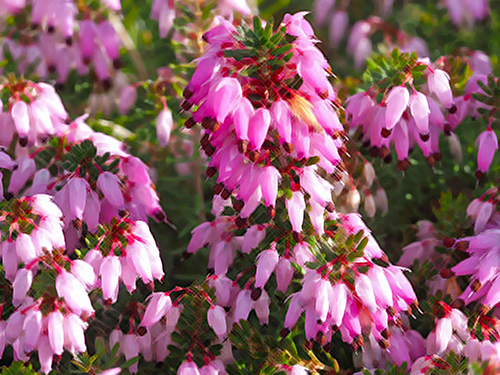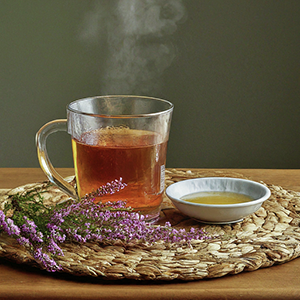Contents
Are you someone who has ever been amazed by that purple-colored carpet covering meadows and bushes in late summer? This is the Heather plant, which is highly valued by bees as they produce honey, and people are fond of natural remedies because of its properties.
- Calluna vulgaris it is a notable plant of the British Isles, grows throughout Europe and western Asia
- Heather flowers can be steeped as tea, added to bath and body creations, and used in homebrewing

Heather Plant Scientific Facts
- Scientific Name: Calluna vulgaris L.
- Other Names: Common Heather, Ling, Scotch Heather.
- French: Bruyére.
- Spanish: Brezo.
- Environment: It usually grows, forming extensive thickets in siliceous unfarmed lands of Europe and North America.
- Description: This small Ericaceae family shrub grows from 20 to 50 cm high. It has small, opposed, numerous leaves. Its flowers grow along the stem, varying from pink to purple-red and violet.
- Parts of the plant used medicinally: The flower clusters.
Heather Healing Properties

The entire plant contains a substance known as arbutin, which, when hydrolyzed by intestinal bacteria, becomes hydroquinone, a powerful urinary antiseptic. It also contains tannin, which gives the plant astringent properties, and flavonoids, with diuretic properties. It is recommended for:

- Urinary afflictions – Infection, cloudy or foul-smelling urine, burning sensation when urinating, cystitis, and pyelonephritis. Its antiseptic properties help the urine recover an ordinary appearance within a few days.
- Diarrhea – Due to its astringent properties.
How to use Heather
- Make a decoction with 50 grams of small branches or flower clusters per liter of water. Boil for ten minutes, sweeten with honey, and drink three or four cups daily after meals.
- Use the erica flower sprinkles in tea blends, bath salts, gifts or bath bombs. 100% organic & pure.
- Dried Heather Erica is extraordinarily beautiful – an almost forgotten natural treasure!
DISCLAIMER: All content on this website is presented solely for educational and informational objectives. Do not rely on the information provided as a replacement for advice, diagnosis, or treatment from a qualified medical expert. If you are pregnant, nursing, or have any preexisting medical concerns, talk to your doctor before using any herbal or natural medicines.
REFERENCES
- George D. Pamplona-Roger, M.D. “Encyclopedia of Medicinal Plants.” George D. Pamplona-Roger, M.D. Encyclopedia of Medicinal Plants. Ed. Francesc X. Gelabert. vols. 2 San Fernando de Henares: Editorial Safeliz, 2000. 570. Print. [heather plant]
- PubMed Study: https://pubmed.ncbi.nlm.nih.gov/19492652/
- http://abc.herbalgram.org/
- Primary Research Studies: https://pubmed.ncbi.nlm.nih.gov/
- Google Scholar https://scholar.google.com/
Last update on 2025-05-15 / Affiliate links / Images from Amazon Product Advertising API


